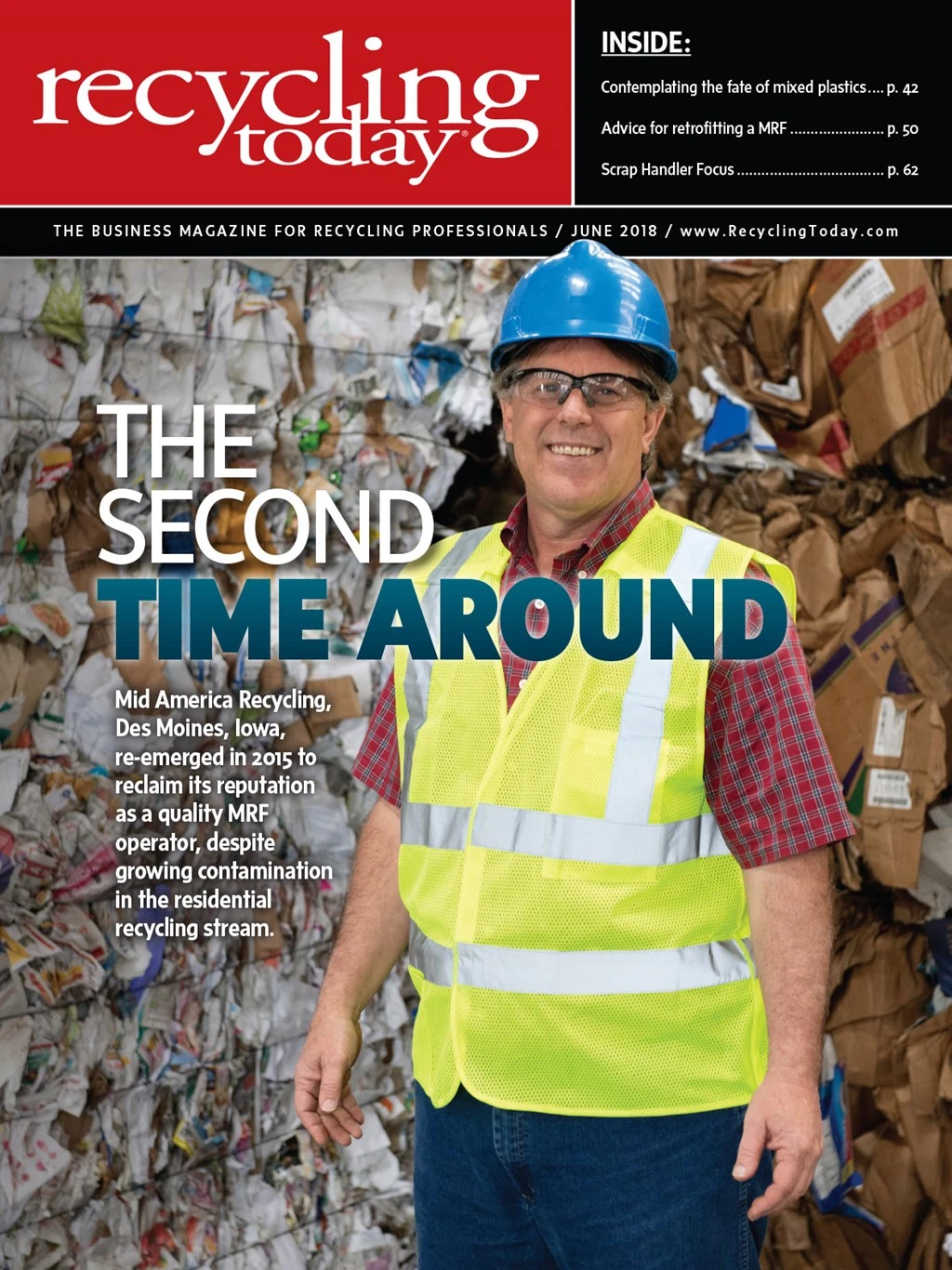For the nonferrous metals sector, May entered like a lion as China suspended the U.S. operations of China Certification and Inspection Group North America (CCIC NA) for one month, effective May 4 through June 4, 2018. The announcement introduced even more uncertainty to a market that was already trying to decipher what China’s Ministry of Ecology and Environment (MEE) meant when it announced April 19, 2018, that the country would ban an additional 32 types of scrap materials from being imported into China by the end of 2019.
Sixteen materials, including scrap

Another 16 types, including some forms of stainless steel scrap, will be banned beginning Dec. 31, 2019.
While one scrap processor based on the East Coast says the copper scrap market has come to a halt as of May 21, a trader in the Southeast instead characterizes it as “a stepping-off point.”
The trader says the new value for some of the scrap products that used to go into China is significantly different going into alternate destinations, which is giving some handlers of these materials pause. “The same piece of scrap may be worth 10 to 15 cents less to Taiwan or India than to China,” the trader says. “It’s their reality based on their needs and their supply and demand for their products.”
He says that with China out of the market, not enough homes are available for the copper and brass scrap that is on the market. Those scrap sellers who are reluctant to accept the market reality concerning export pricing, he says, will find themselves unable to move the material in the long run.
“The same piece of scrap may be worth 10 to 15 cents less to Taiwan or India than to China.” – a red metals trader based in the Southeast
The trader says that as of mid-May he’s able to move No. 1 and No. 2 copper as well as bare bright, “just at crappier numbers than before.”
He says, “Some companies are taking a position and selling large chunks of material,” adding that they realize these countries won’t be buying at these quantities in the long term.
“Demand all of a sudden has crept to halt,” the East Coast-based processor says of the domestic market. He adds that dealers are fighting for the North American consumers that are buying material.
“I don’t think there is a huge amount on the supply side, but what is out there is being held onto,” he says. “People are waiting to see the market’s direction. Whether China reopens after 30 days is the question.“
The processor says he fears China may draw out the CCIC NA suspension further. However, the source in the Southeast says he thinks we’ll have an answer by June 4, but it will be far from a resolution to the situation. He expects China will issue a list of changes that will take 30 t0 60 days to implement. (Shortly after these interviews, China agreed to let scrap shipments from the U.S. be inspected by a Canadian agency through June 4, 2018.)
The trader says he expects uncertainty to linger through the end of this year and into next, particularly around the definition of Category 6 and Category 7 material, which he describes as historically having been “ill-defined.”
Get curated news on YOUR industry.
Enter your email to receive our newsletters.

Explore the June 2018 Issue
Check out more from this issue and find your next story to read.
Latest from Recycling Today
- Green Cubes unveils forklift battery line
- Rebar association points to trade turmoil
- LumiCup offers single-use plastic alternative
- European project yields recycled-content ABS
- ICM to host colocated events in Shanghai
- Astera runs into NIMBY concerns in Colorado
- ReMA opposes European efforts seeking export restrictions for recyclables
- Fresh Perspective: Raj Bagaria






